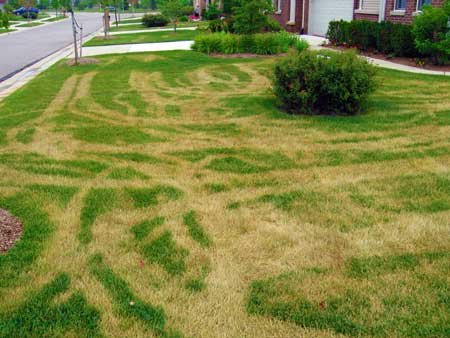Heat tracks on lawns
Editor’s note: This article is from the archives of the MSU Crop Advisory Team Alerts. Check the label of any pesticide referenced to ensure your use is included.
I call them heat tracks, but apparently I’m about the only one. If you’re like me and you’re looking for quick information, I naturally go to Google. However when I Google heat tracks the results are some music or Nascar references. Add heat tracks in turf and the results are some of my previous Landscape Alert articles.
Recently, we received some pictures of heat track damage from Oakland County, and as always the question was whether the damage was from mowing or a fertilizer application. Sometimes I’ve seen it from both, but the key is it’s not usually from the fertilizer, but actually from the equipment that is being used to spread the fertilizer. The damage occurs when the turf is starting to wilt and any traffic is put on the turf. Anything you drive over the turf when it is wilting will cause heat track damage. The good news is that if temperatures remain relatively cool and the turf receives water, it will grow out of the damage within a couple weeks.

Heat track damage in Oakland County.
The challenge for large commercial mowing operations is knowing when to avoid mowing jobs to reduce the risk of heat track damage. If the lawn is starting to look bluish or you notice foot printing on the turf, you can be guaranteed that equipment will really do a number on the turf. The best advice is to mow during the cooler times of the day and keep an eye on foot printing.
Dr. Frank's work is funded in part by MSU's AgBioResearch.



 Print
Print Email
Email

